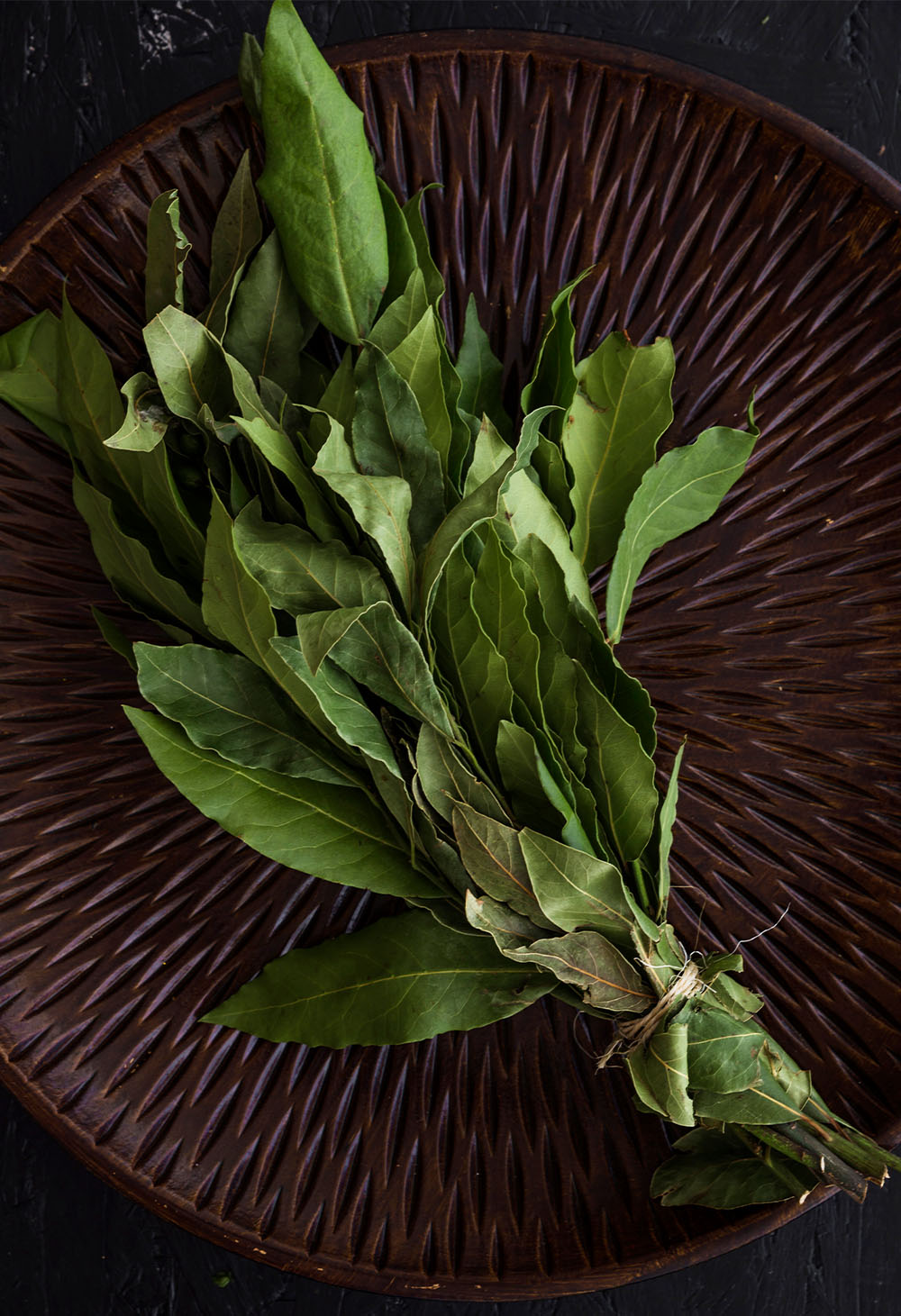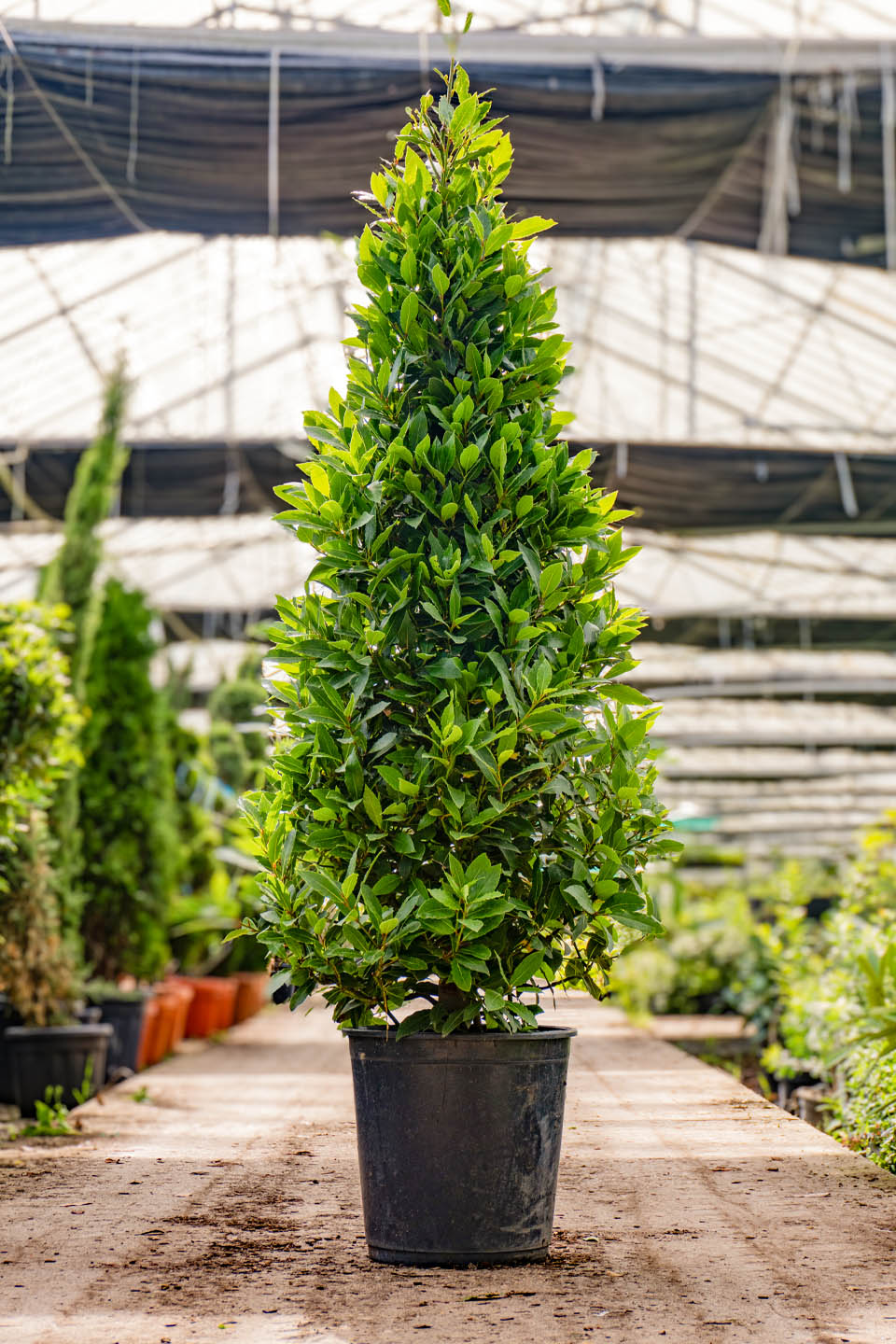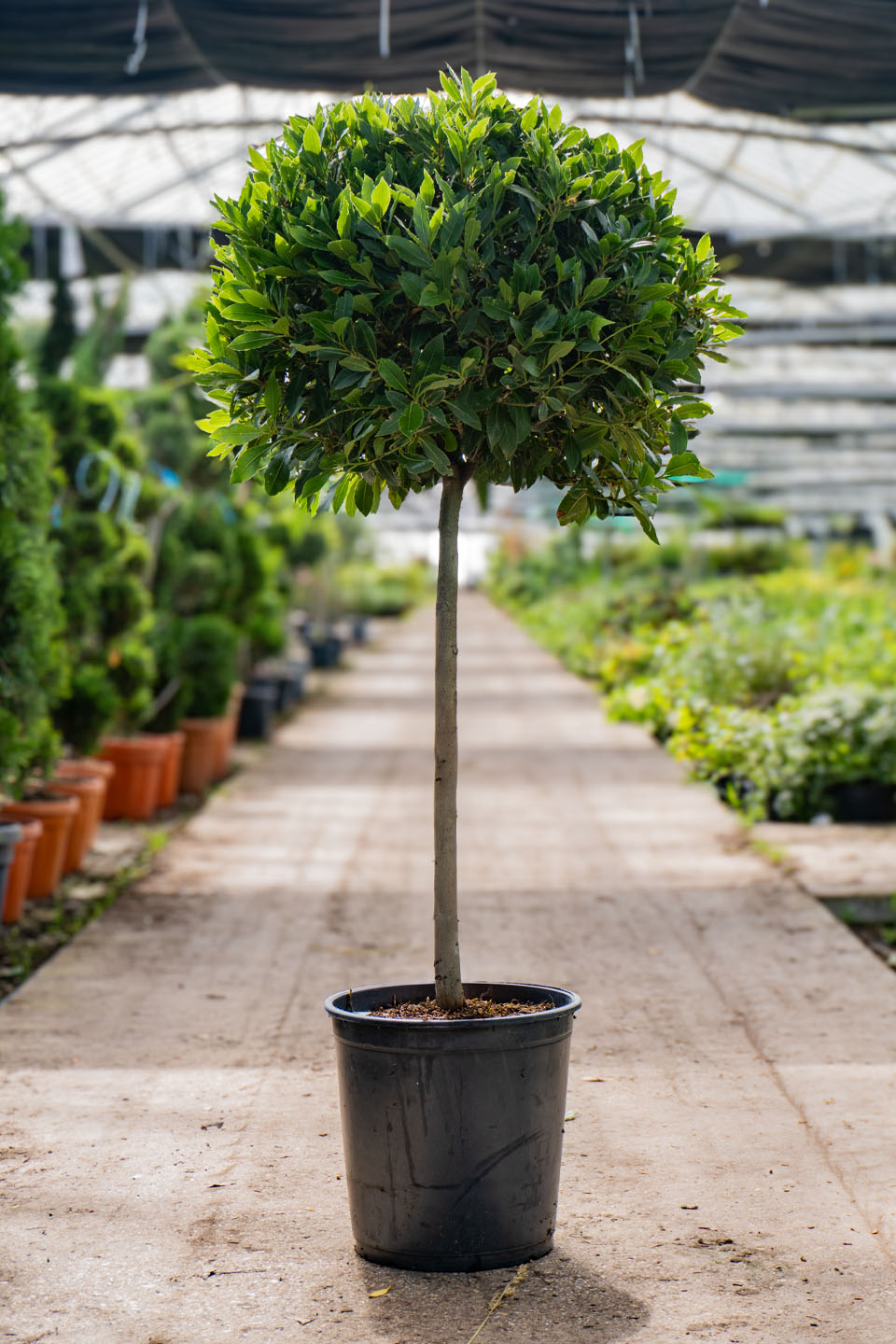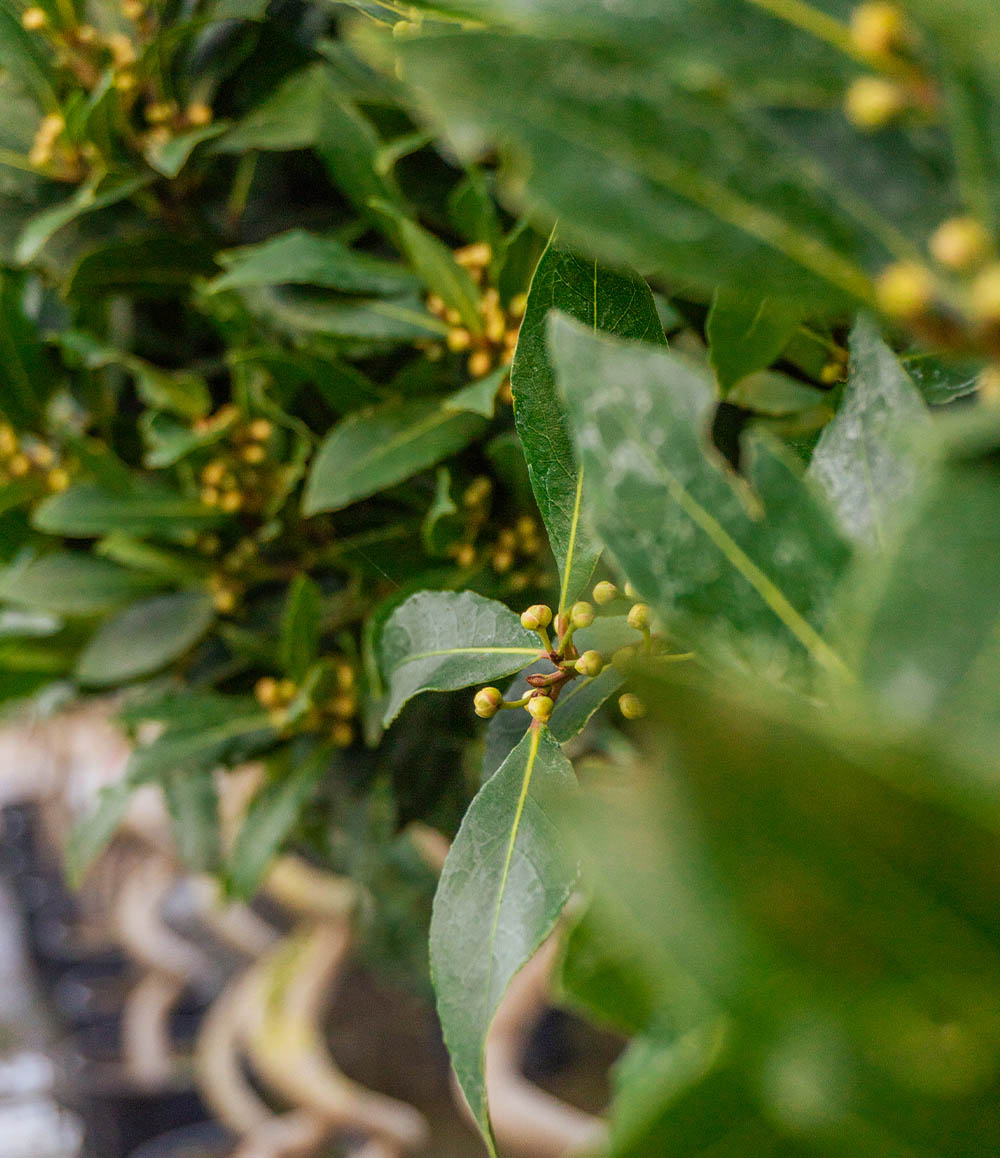Plant Focus: Laurus nobilis (bay laurel)
An ornamental, aromatic evergreen with a rich cultural heritage
Laurus nobilis, commonly known as bay tree or bay laurel, is an evergreen tree or large shrub, with smooth, ovate foliage, that gives off an aromatic scent when aggravated.
Native to the mediterranean region, originally Laurus nobilis forest covered most of the continent, in an era where the mediterranean climate was more humid. Much of this forest retreated around 2.5 million years ago during the Pliocene era however, when the climate in the region become much drier, with the last remaining vast forest areas disappearing about ten thousand years ago. Despite this, the bay tree features prominently in much of Europe’s history and culture, with the plant not only having symbolic significance, but also significance in medicinal and culinary applications.
In Ancient Greece, the plant is named after Daphne, a prominent figure of Greek mythology with whom the god Apollo falls in love. To protect her, the Mother Earth, Gaia, transported Daphne to Crete, and left a Laurus nobilis tree in her place, with which Apollo fashioned wreaths from the foliage to console himself.
Key Characteristics:
✓ Evergreen Shrub or small tree
✓ Dioecious – having both male and female individuals
✓ Grows up to 12 metres tall, and 10 metres wide
✓ Slow growing plant
✓ Glossy dark-green aromatic leaves, with many culinary and medicinal uses
✓ Produces small yellow flowers in spring, followed by ornamental black berries
✓ Thrives in full sun or partial shade
✓ Prefers well drained soil
✓ Can be pruned to form various topiary shapes
✓ Given the prestigious Award of Garden Merit by the Royal Horticultural Society
From this, the ‘Laurel wreath’ became a symbol of the highest status in Greek culture. Laurel wreaths were given as prizes at games in honour of Apollo, and the leaves of Laurus nobilis became a symbol of Apollos favour. The tree’s significance was also recognised by the Roman Empire, where it was regarded as a symbol of victory, immortality, purification, prosperity, and health. From this, its name has been used in many different terms regarding significant achievement, which are still in use today, such as ‘baccalaureate’, ‘poet laureate’, and ‘to not rest on ones laurels’, in which the laurels refer to wreaths given as recognition of achievements or victories.
The Laurus genus contains only 4 known species of plant, of which Laurus nobilis is the most popular. It’s slow growing, taking almost 50 years on average to reach its full height, but can grow to 8-12m ultimately, spreading as wide as 8m. Laurus nobilis loves full sun, or partial sun, and grows best in sheltered areas, avoiding overly harsh winter conditions. They are often container grown, as they take well to being potted, and are used frequently in topiary, providing an ornamental, instant-impact option to any planting scheme.

Dried laurus to use for cooking.
Did you know?
The name of the genus, Laurus, originates from the fact that the tree was mistakenly labelled as a Laurel tree of the Prunus genus, the most common species of which are also referred to as ‘laurel’, such as the cherry laurel (Prunus lauroceracus). Despite both commonly being referred to as laurel trees in the modern age, they both actually belong to different genera.
Culinary uses
The leaves of the bay tree have been used in cooking for thousands of years. ‘Bay leaves’ are a common ingredient in dishes from cultures all across the world, although contrary to popular belief, they do not always originate from the Laurus nobilis species. For example, Indian bay leaves, which are a staple of many popular curry and rice dishes, are actually picked from Cinnamomum tamala trees, which belongs to a genus of trees that also produce cinnamon spices. In Mediterranean cooking, the laurel bay leaf is used as a common ingredient. When the leaves are freshly picked, they’re often much milder in aroma, but when left to dry, they begin to develop their stronger fragrance. The leaves are added to soups, sauces, and other dishes whole during the cooking process, where they infuse the dish with their unique flavour, and are removed before eating. Their flavour is described as somewhat herbal and floral, reminiscent of oregano or thyme. Whilst the leaves are used for their fragrant flavours, the berries are poisonous, and should be avoided or discarded.
Uses in medicine
In addition to its application in cooking, the leaves of the bay tree are also proven to possess many medicinal benefits. They aid digestion, relieve stomach ulcers, and can ease respiratory conditions like colds and sinusitis. Their anti-inflammatory compounds help reduce inflammation and pain, while their antimicrobial properties fight infections. Bay leaves also support heart health by lowering cholesterol and improving circulation, and they may help manage diabetes by regulating blood sugar levels. Additionally, they have a calming effect that can reduce stress and anxiety, and their topical application can treat skin conditions like eczema and acne. The leaves contain an essential oil, which is extracted and used in various applications. The leaves are also often boiled in hot water to make a tea, and the steam from boiling leaves is often inhaled to relive respiratory issues.
Fun fact:
In medieval Europe, Laurus nobilis was planted on the borders of cemeteries and people’s homes as a measure of protection against supernatural threats. It was thought that the bay tree was capable of repelling witches, demons, sprits, and even the undead!

Topiary shapes available from Greenwood Choice:
At Greenwood Choice, we import Laurus nobilis in various sizes and topiary shapes, all expertly grown in Belgium and maintained by the most experienced, skilled topiary artists. These trees have been gradually shaped and pruned, over the course of a decade in some cases, to form unique ornamental trees and shrubs, which can provide instant impact in any garden or landscape. Thanks to its dense foliage, Laurus nobilis can be pruned into a variety of shapes, and when shaped from an early stage, the trunks of the plant can be either spiralised, being wrapped round a metal pole, or three young shoots can even be woven together to form a braided trunk. Thanks to their slow growth rate, bay trees are perfectly suited for planting in residential spaces, due to the lack of regular maintenance they need to retain their topiary shape.

Laurus nobilis CG
40-45cm clipped ball

Laurus nobilis CG 140cm cone

Laurus nobilis CG 170cm cone

Laurus nobilis CG
1/2 standard 60-65cm head

Laurus nobilis CG 1/2 standard spiral stem 40-45cm head

Laurus nobilis CG 170cm cone
How to grow and care for Laurus nobilis
Bay trees are extremely versatile, and can be grown in a variety of conditions. Part of their suitability for ornamental purposes is characterised by their ability to grow well in containers, as well as in the ground, making them a perfect specimen plant to be placed either side of a doorway, or in a hard landscaped space. Laurus nobilis prefers well-drained soil, planted in sun or partial shade, preferably in a sheltered location. A soil-based compost is preferable, with plenty of grit to improve soil stability and drainage. Bay trees are somewhat hardy against the cold, and should be able to survive typical British winter conditions. Ground planted trees are more tolerant than their container grown equivalents, but provided they’re planted in a sheltered location, they should be fine. To plant in the ground, ensure the soil has been improved before planting, making sure to add extra grit, and make sure the plant is standing straight before firming the soil around the root ball. Once planted, make sure to water the plant in well until it establishes, and keep watering often for the first few weeks to help it settle. Laurus nobilis is quite drought tolerant, and if planted outside, should get all of the water it needs from rainfall alone. Ensure that the soil not dry out in summer, but make sure that any excess water is able to drain away, as waterlogged soil will cause damage to the routes. Prune with secateurs when required during spring, making sure to trim at the stem, to avoid unsightly leaf disfigurement from electric trimmers. If grown in a container, it’s recommended to repot the plant every two years, ensuring to remove the soil from the bottom third of the roots, and replacing with fresh compost.

Detail of Laurus nobilis berries
Pests and diseases that affect this species
Generally, Laurus nobilis is trouble-free when it comes to pests and diseases, but can be affected by a few different varieties. Bay trees are attractive to bay suckers, which are small insects which suck the sap of the tree. They leave behind a white residue, and can create dry spots on the tree where they have fed. Whilst not inherently dangerous to the overall survival of the plant, bay suckers can alter the appearance of the tree. The leaves can thicken, turn yellow, and curl downwards toward the ends. To manage, affected leaves can be removed in small quantities, but it is not advised to do so excessively, as this may cause more damage to the plant than the compromised leaves are in the first place. Other pests include horse chestnut scale, soft scale, and tortrix moth caterpillars. Whilst all of these can affect the visual appeal of Laurus nobilis, none will pose any significant risk to the tree’s wellbeing. Bay trees can be susceptible to powdery mildew, which can be avoided by planting in a sheltered location, and in full sun, whilst making sure the leaves do not remain damp for extended periods.
If you would like more information on the Laurus nobilis topiary varieties we sell, get in touch with the G Team today.

